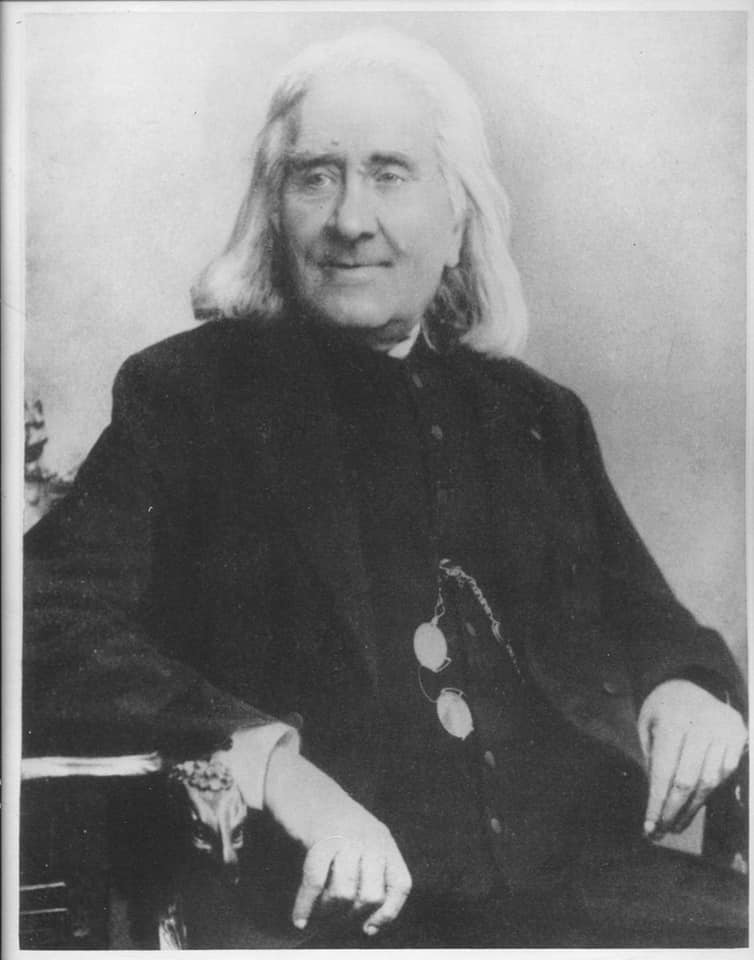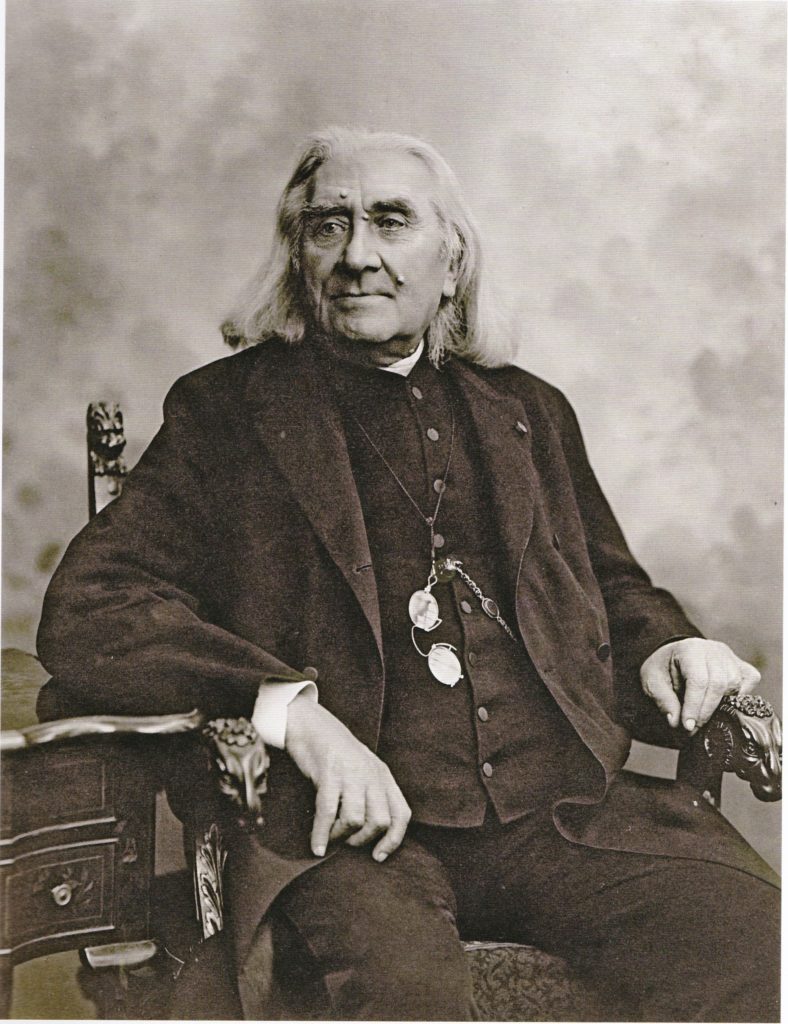Published on the Tibor Szasz Forum for Pianists page, on July 8, 2021. If you want to know how the Story Behind series started, I give details in “Story Behind” Series #1″.
Original post:
Tibor Szasz posted:
A little known smile 🙂

Story behind the picture and the quote, and conversation:
Diane Kolin
1886 in Paris 😉 I can write a “story behind” on this picture if you want 🙂
Tibor Szasz
Diane Kolin You are welcome to do so. But are you aware who has the original photo? The information is in one on the comments on my Forum, I believe.
Here is the information: “Tibor, sorry to delay with my response. I remember this large photograph (approximately 2×3 feet in size) hanging in my piano teacher’s studio in Charleston, West Virginia during the mid-late 1960’s when I was a child. Her name was Beulah Duffield. Of course, I didn’t know who it was then. When I was 11, she moved away to Florida, but she and my mom stayed in touch with annual Christmas cards. Through my mom, my former teacher learned that I made piano my career and that Liszt was my composer of choice. Mrs. Duffield passed away sometime in the early 2000’s at age 99. She taught until shortly before her death. Several months after she died, I was contacted by her nephew (she had no children), who lived in New Jersey. He said I was named in her will as the beneficiary of this photograph. We met in Philadelphia and he delivered this portrait to me. According to him, it had been willed to Mrs. Duffield by her teacher, and to him by his teacher, who was a student of Liszt. He didn’t know the names of those people, nor did he know any dates regarding the acquisitions. I’ve never opened the portrait to see if there’s any writing on the inside, but it certainly looks to be old enough to be an original. Taking only that story, and the general look of the photo, I assume it to be very close to, if not an actual original photograph.”
That information is from Tim Shafer who currently owns the photo.
Diane Kolin
Tibor Szasz Thank you for this, really interesting! I will still send my story behind, as a complement 🙂
Diane Kolin
Here is my “story behind” post. It is longer than what I wanted to write initially, but I think it might be interesting to some of you, although some of my narrative is known among Liszt specialists.
Regarding the story of the picture itself, maybe Tibor Szasz you can pass it on to Tim Schafer, as he might find the information useful if he wants to verify if his copy is the original picture. I post hereunder the copy of the picture I have, from the same series. It was taken in May 1886 by Wilhelm Benque, a French photographer of German origin, who owned the Benque & Co studio (in French, Benque et Compagnie) in Paris, located at 33 Rue Boissy-d’Anglas. They also had an exhibition gallery at 5 rue Royale. Benque photographed Liszt only two months before he died. During his stays in Paris, in the last months of his life, two photographers took pictures of him in March 1886, Benque and Paul Nadar. The latter did a series of pictures, that are still famous today (one of which is on my wall right now). Benque’s series is less known. Until I saw this one posted by Tibor Szasz, I knew only the existence of the one I attach to this post. We see Liszt in a very similar position, but with a more serious look. We recognize the wooden lions’ heads on the armrests of the chair. Also, look at the fingers of the right hand (on our left), which are also in the exact same position.
Here is the context in which this series of pictures was taken. Liszt was busy during the last months of his life. He decided to go on a very tiring tour. 1886 started with his students, with whom he was celebrating New Year’s Eve. He is known to have said, when they were all together at midnight: “A bad year! It starts with a Friday and my birthday falls on a Friday too.” Liszt was superstitious, but unfortunately he was right. This year was bad. He was becoming blind because of a grey cataract, that got worse in the last months of his life. He was supposed to be operated in Halle in August, but he died just before. After New Year celebrations, he left for Rome on January 21st, then Budapest until March 11th, then Vienna until March 15th, then Liège for two days from March 16th to 18th, then Antwerp from 18th to 20th, and then Paris from March 20th to April 3rd. That’s when this picture was taken. I could conclude here but it would be like stopping just a few pages before the end of the book, so here is what happened next.
After his first stay to Paris, he went to London (the last time he was there was in 1840) from March 3rd to April 18th, Antwerp again quickly on the 19th, then Brussels from April 20th to 27th, and Paris again from April 28th to May 15th. This last trip to Paris was a great success. His Legend of St Elisabeth was given at the Trocadero, with an audience of more than 7,000 people. He must have been totally exhausted when he came back to Weimar on May 17th. His loss of sight was so bothering that he went to see a specialist in Halle. He was diagnosed with severe cataract, and dropsy. As I mentioned previously, he was scheduled for surgery in August. Despite his increasing health issues, he continued to travel. From June 2nd to 6th, He attended the Tonkünstler-Versammlung (Musicians Congress) in Sondershausen. A group picture taken by Louis Held, who photographed Liszt and his students in 1884 et 1885 in Weimar, shows him in the front row.
Within his close circle and family, he was very well surrounded by his students (his “children” as he called them), but it was very tense between him and his daughter Cosima since Wagner (who was Cosima’s husband and Liszt’s friend for many years) died in 1883. Since then, Cosima and Liszt barely talked to each other. Liszt’s attempts to contact her or visit her had remained unsuccessful. However, she needed support for the Bayreuth festival, which had financial difficulties, and visited him in Weimar to persuade him to come to the wedding of his granddaughter Daniela in July in Bayreuth, and act as an attractive figure for the festival. He accepted. He attended the wedding from July 1st to 4th, but after that, things didn’t go as initially planned. Liszt was not welcome in Cosima’s house anymore (when Wagner was still alive, he used to stay in Wahnfried, the name of the property) so he found accommodation just across the street, in Wahnfriedstrasse 9. He went to Coplach in Luxembourg, to visit his friend and Hungarian compatriot, the painter Mihály Munkácsy, from July 6th to 19th, after an exhausting trip. He was sick in bed for a few days after he arrived. The last time he touched a piano was in the Luxembourg Casino, where he had attended a concert. Pushed by Munkácsy’s wife, Cécile, he played three of his compositions: the first Liebesträume, Mélodies polonaises from Glanes de Woronince, and his 6th Soirée de Vienne. Then he went back to Bayreuth, as he had promised Cosima. He arrived on July 21st, very sick and feverish. He attended the performances of Parsifal on July 23rd and Tristan on the 25th. Then he went back to Wahnfriedstrasse 9, and became sicker and sicker. He died on the 31st. These 10 last days were described in detail in his pupil Lina Schmalhausen’s diary. Liszt’s end was very sad and lonely. This angers me a lot. Cosima forbade his pupils and friends to be at his side, and lied to the world, saying that her father died peacefully, surrounded by his loving family, with “Tristan” as a last word. What can be read in Lina’s diary is different, and has been confirmed by the testimonies of those who were present.
Fortunately, all of us who love Liszt as a musician, a composer, a teacher, a musicologist, are his heirs today. I think we can count a few fortunate holders and transmitters of his legacy in this group. Let’s continue to carry it.

Tibor Szasz
Dear Diane Kolin: I will pass unto Tim Shafer your impressive documentation of which I have extracted the following part: “During his stays in Paris, in the last months of his life, two photographers took pictures of him in March 1886, Benque and Paul Nadar. The latter did a series of pictures, that are still famous today (one of which is on my wall right now). Benque’s series is less known. Until I saw this one posted by Tibor Szasz, I knew only the existence of the one I attach to this post. We see Liszt in a very similar position, but with a more serious look. We recognize the wooden lions’ heads on the armrests of the chair. Also, look at the fingers of the right hand (on our left), which are also in the exact same position.”
To me, the saddest part of Diane Kolin’s documentation is the following part: “Cosima forbade his pupils and friends to be at his [Liszt’s] side, and lied to the world, saying that her father died peacefully, surrounded by his loving family, with “Tristan” as a last word. What can be read in Lina’s diary is different, and has been confirmed by the testimonies of those who were present.”
Tim Shafer
What a wonderful context for these photos, Diane. Thank you, so much. I have promised Tibor to strive to get a higher quality reproduction of this photograph. I will renew my efforts.
